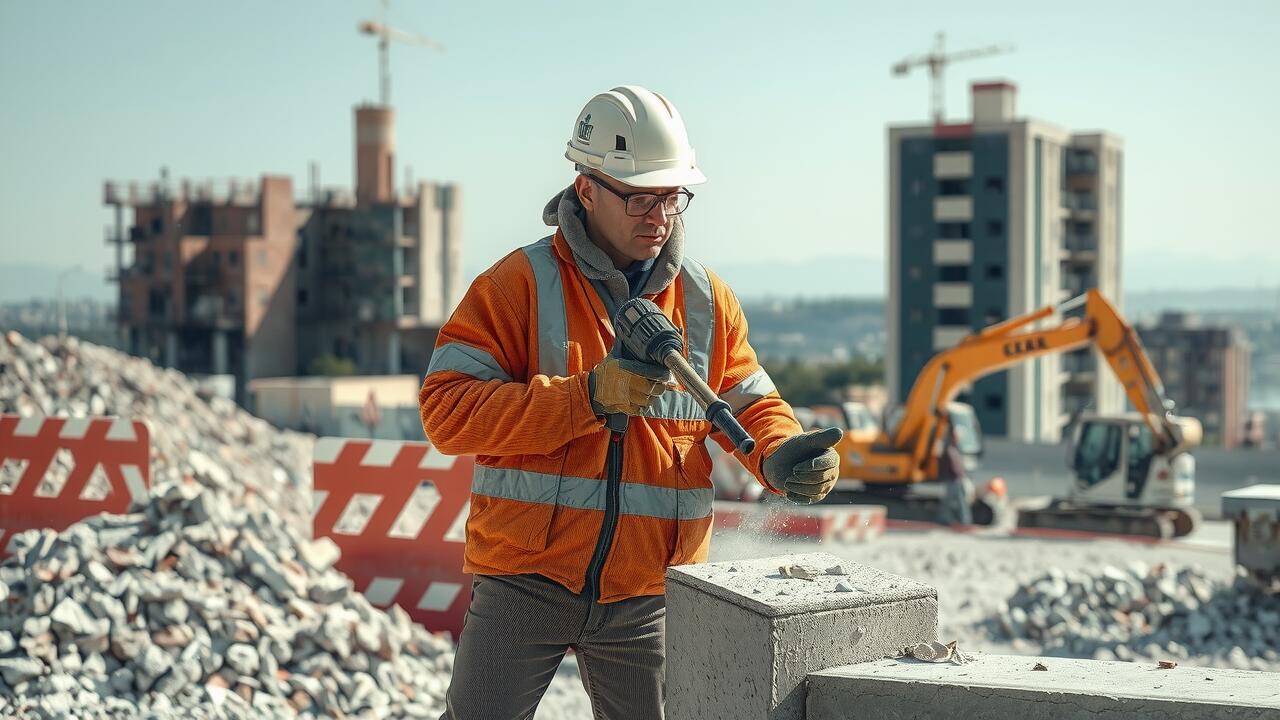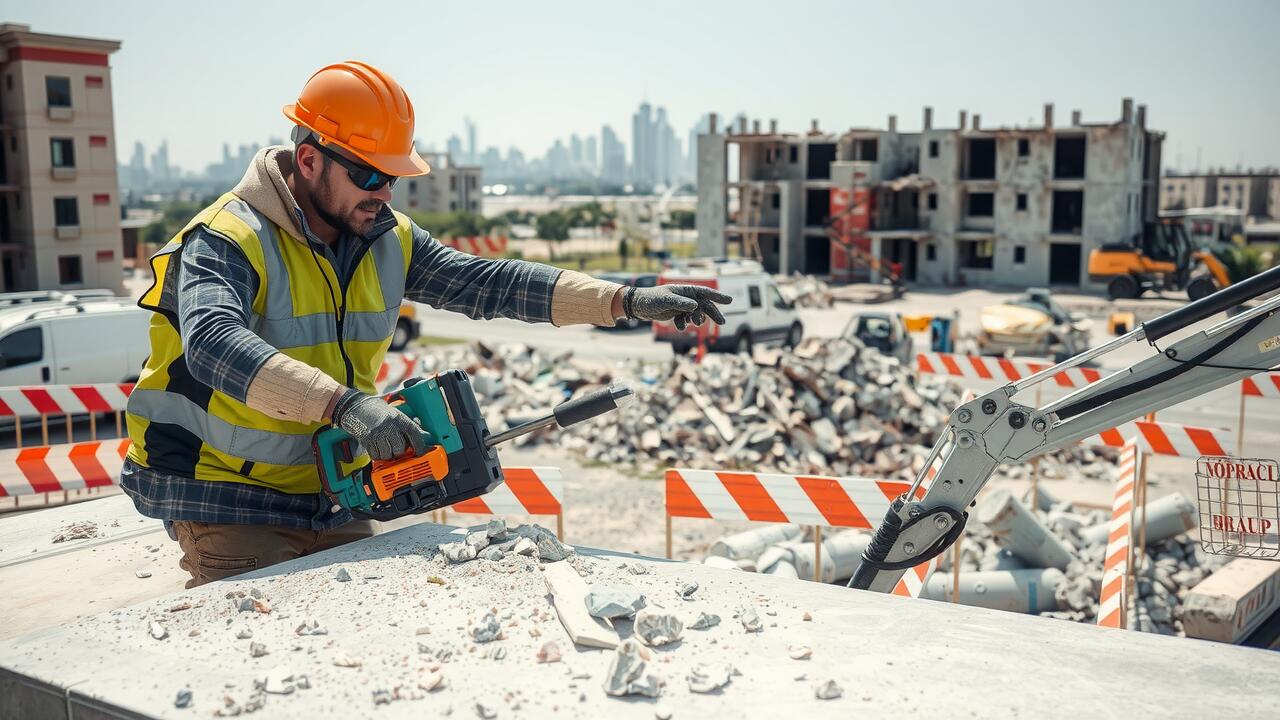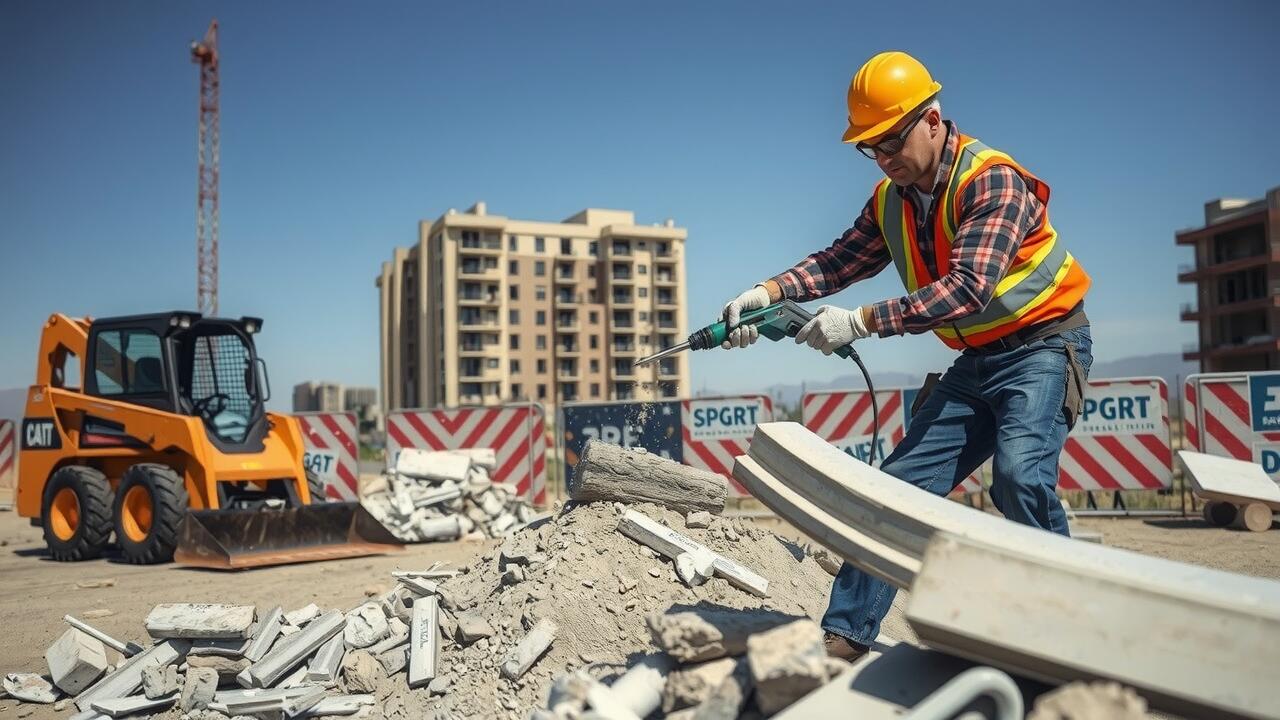
Table Of Contents
Safety Standards in Concrete Demolition
Concrete demolition presents various risks to both workers and surrounding areas. Companies engaged in this activity are required to adhere to strict safety standards established by regulatory bodies such as OSHA. These standards emphasize the importance of personal protective equipment, including helmets, gloves, and high-visibility clothing. A thorough safety program includes regular training sessions to prepare workers for potential hazards and proper handling of equipment. Consistent monitoring of compliance with these standards ensures a safer work environment and helps mitigate accidents.
In addition to personal safety equipment, effective planning and risk assessment are critical components of safety in concrete demolition. Each project should begin with a detailed analysis of the site, identifying potential dangers such as nearby structures, utilities, and environmental concerns. Implementing proper signaling and communication procedures among team members promotes a culture of safety on the job site. Furthermore, regular inspections of tools and machinery contribute to minimizing operational hazards, allowing for a more efficient concrete demolition process while prioritizing worker and public safety.
Compliance and Best Practices
Compliance with local regulations is crucial in concrete demolition to ensure both safety and sustainability. Companies engaged in this task must adhere to strict guidelines set by state and federal agencies. This includes obtaining the necessary permits before beginning work, conducting risk assessments, and implementing safety protocols to protect workers and the surrounding environment. Best practices also involve training employees in safety measures and proper procedures, which minimizes the likelihood of accidents during demolition projects.
Employing best practices in concrete demolition can significantly enhance project efficiency. Implementing a systematic approach to planning and execution allows companies to identify potential challenges in advance. By utilizing the latest technologies and methods, businesses can optimize their workflows, reduce waste, and enhance safety. Regular audits and assessments of equipment and procedures help ensure ongoing compliance with safety standards, further reinforcing the commitment to high-quality demolition services.
Environmental Considerations
Environmental considerations are crucial in the concrete demolition industry. Companies increasingly prioritize reducing their ecological footprint. Effective waste management becomes essential, as concrete debris contributes significantly to landfill mass. By recycling materials, companies can ensure that less waste ends up in landfills. This practice not only conserves resources but also mitigates the environmental impact associated with new cement production.
Eco-friendly demolition techniques are gaining traction among leading concrete demolition companies. Many firms are now employing methods that minimize dust and noise pollution during projects. The use of advanced machinery is often instrumental in achieving these goals. Additionally, adopting practices such as selective demolition allows for a greater focus on reusing materials, further promoting sustainability in concrete demolition.
Eco-Friendly Demolition Techniques
Eco-friendly demolition techniques in concrete demolition focus on minimizing environmental impact and ensuring sustainable practices. Companies increasingly adopt methods that prioritize recycling and reusing materials. By breaking down concrete structures carefully, they can extract valuable components like steel rebar and crushed concrete, which can be repurposed in new construction projects. This approach not only reduces waste sent to landfills but also conserves natural resources.
Innovative technologies are also making eco-friendly concrete demolition more feasible. Advanced tools, such as hydraulic splitters and diamond wire saws, help in reducing noise pollution and dust emissions during the demolition process. Additionally, some firms utilize dust suppression systems to limit airborne particles, further enhancing their environmental performance. By integrating these techniques, concrete demolition practices are evolving towards a more sustainable future.
Equipment Used in Concrete Demolition
Concrete demolition requires specialized equipment designed to handle the challenges presented by robust materials. Common tools include hydraulic excavators equipped with demolition attachments, which provide the necessary power and precision. These machines enable contractors to break down large sections of concrete quickly and efficiently. Additionally, handheld tools like jackhammers and concrete saws facilitate more detailed work, allowing for cuts and removals in tighter spaces.
The technology utilized in concrete demolition continues to evolve, incorporating advanced features such as remote control and robotic systems. These innovations enhance operator safety by minimizing direct contact with hazardous conditions. Companies often invest in reinforced safety gear and equipment designed to reduce noise and dust pollution during demolition processes. By utilizing the latest tools and technology in concrete demolition, firms can improve efficiency while adhering to industry standards.
Overview of Tools and Technology
Concrete demolition requires specialized tools and technology to ensure efficiency and safety. Companies in La Mesa utilize equipment such as hydraulic excavators, jackhammers, and diamond wire saws for various demolition projects. The choice of tools often depends on the scale of the job and the types of structures involved. These machines enhance precision and reduce the time taken for demolition, making them integral to the industry.
Additionally, advancements in technology have introduced innovative solutions like robotic demolition equipment. Such machines can access hard-to-reach areas while minimizing risk to workers. This trend towards automation in concrete demolition not only improves safety but also increases productivity. As the industry continues to evolve, the ongoing development of tools and technology will play a significant role in shaping effective demolition practices.
FAQS
What are the key safety standards followed by concrete demolition companies in La Mesa?
Concrete demolition companies in La Mesa adhere to strict safety standards that include using personal protective equipment (PPE), ensuring proper site management, and following OSHA regulations to minimize risks associated with demolition activities.
How do concrete demolition companies ensure environmental compliance?
Companies ensure environmental compliance by following local, state, and federal regulations, conducting environmental impact assessments, and implementing eco-friendly demolition practices that minimize waste and pollution.
What are some eco-friendly demolition techniques used in La Mesa?
Eco-friendly demolition techniques include selective demolition, recycling concrete materials, using water to suppress dust, and employing equipment that reduces noise and emissions, thereby lessening the environmental impact.
What types of equipment are commonly used in concrete demolition?
Common equipment used in concrete demolition includes excavators, jackhammers, concrete saws, and hydraulic breakers, as well as advanced technology like robotic demolition machines for safer and more precise operations.
How can I choose the best concrete demolition company in La Mesa?
To choose the best concrete demolition company, consider factors such as their experience, safety record, environmental practices, customer reviews, and whether they use modern equipment and techniques for efficient demolition.

